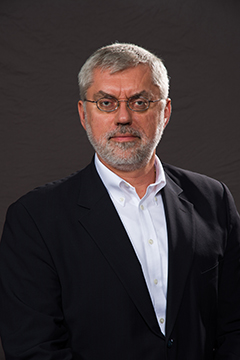Workplace technology to continue mode of rapid change
The COVID-19 pandemic clearly expedited the use of technology in the workplace, especially virtual and digital communications.

However, Arkadiusz Mironko, assistant professor of management at Indiana University East, finds the changes in workplace structures and processes are changing in many other ways as well.
“Certainly the pandemic has had a significant impact on virtual collaboration technology, as it forced many companies and organizations to adopt virtual workspaces and remote work as the norm, rather than the exception,” he said. “This sudden shift to remote work has inspired faster and different advances in virtual collaboration technology as companies and organizations are forced to find new and innovative ways to collaborate and communicate effectively with remote teams.”
Mironko said many of the tools for virtual work environments were already available before COVID-19. The pandemic proved to be a catalyst for faster and different advances in virtual collaboration technology. “As a result, we can expect to see continued innovation in this area in the coming years as companies and organizations continue to embrace virtual collaboration as a key part of their operations.”
The forced development met much resistance from corporate leadership, though he believes ultimately it was an experiment “that largely proved successful. Of course, remote work is not a solution for every job. However, we have now plenty of hard evidence that it allows companies to keep up, if not even increase productivity, employee satisfaction, lower stress and provides other benefits.”
He expects continued innovation as companies embrace virtual collaboration post pandemic. “We are now discussing and experimenting with flexible work schedules between on-site and remote work, four-day work weeks for some professions and other changes.”
Mironko said the shift to virtual technology also uncovered issues with business leadership hierarchy. “This rapid shift to virtual work highlighted the need for leaders to adapt their leadership styles and practices to effectively manage and motivate their teams in a virtual environment.”
As a result, researchers and scholars in the field of business and management have started to further investigate how the use of technology changes the nature of leadership and hierarchy structures in virtual work environments. “The research focuses on understanding the challenges and opportunities that technology presents for leaders, managers, and employees, as well as the implications of these changes for organizations and individuals.”
Mironko has long had an interest and conducted research involving the topic. He co-authored a chapter, “The Changing Technology Use and its Impact on Leadership and Hierarchy Structure in the Virtual Workplace,” published in the December issue of The Business Advancement through Technology Volume II. The chapter discusses how technology is constantly evolving and influencing the way people work. He has long had an interest and done research in the topic.
In the last 10 years, the most significant shift in technology in the workplace has been the widespread adoption of cloud computing, according to Mironko. “Cloud computing enables companies to store and access data and applications over the internet, providing businesses with greater flexibility and scalability. This shift has allowed companies to operate more efficiently and effectively while reducing costs.”
More recently, the rise of artificial intelligence and machine learning are transforming how businesses operate by automating processes and tasks previously done by humans. “Artificial intelligence and machine learning have also enabled companies to extract insights from large amounts of data, providing them with a competitive advantage in the marketplace.”
The pandemic has undoubtedly brought significant changes to the workplace – and not just in technology. “Besides technology, it is also about the willingness to experiment and adopt. We see tensions between the leadership and the workforce in some industries. This will have to play itself out in practice. Along with the changing work practices and technological adaptation we also see changes in leadership practices as well. Our research shows a shift in management tactics and an increased focus on managing, motivating, and retaining staff. The pandemic has highlighted the need for companies to be flexible in their approach to work, and discussions around topics like the four-day work week and permanent remote work have become more important.”
Companies must now focus on managing, motivating and retaining staff, “which is an even bigger concern for most companies than technology itself. Overall, companies that prioritize their employees and invest in new technologies will be better equipped to succeed and thrive in the business/economic world of the future. Managers should stay informed about the latest technology trends, invest in training programs, be open to feedback, adapt their leadership style to accommodate changing dynamics, and ensure that all employees have access to the necessary technology. By doing so, they can position their businesses for continued growth and success in the virtual workplace.”
Mironko received his Ph.D. in International Business and his Master of Science in Global Affairs with a Concentration in Economy from Rutgers University in Newark, New Jersey. He also received his Bachelor of Arts in Management and Marketing with a Concentration in Organization Development from Felician College in Rutherford, New Jersey. His Bachelor of Arts in Theology and Education was completed at the Christian Academy of Theology in Warsaw, Poland.
His research interests include international business strategy, entrepreneurship, corporate knowledge flows, innovation, and economies in transition, foreign direct investment, research methods, economic globalization and quantitative methods.

